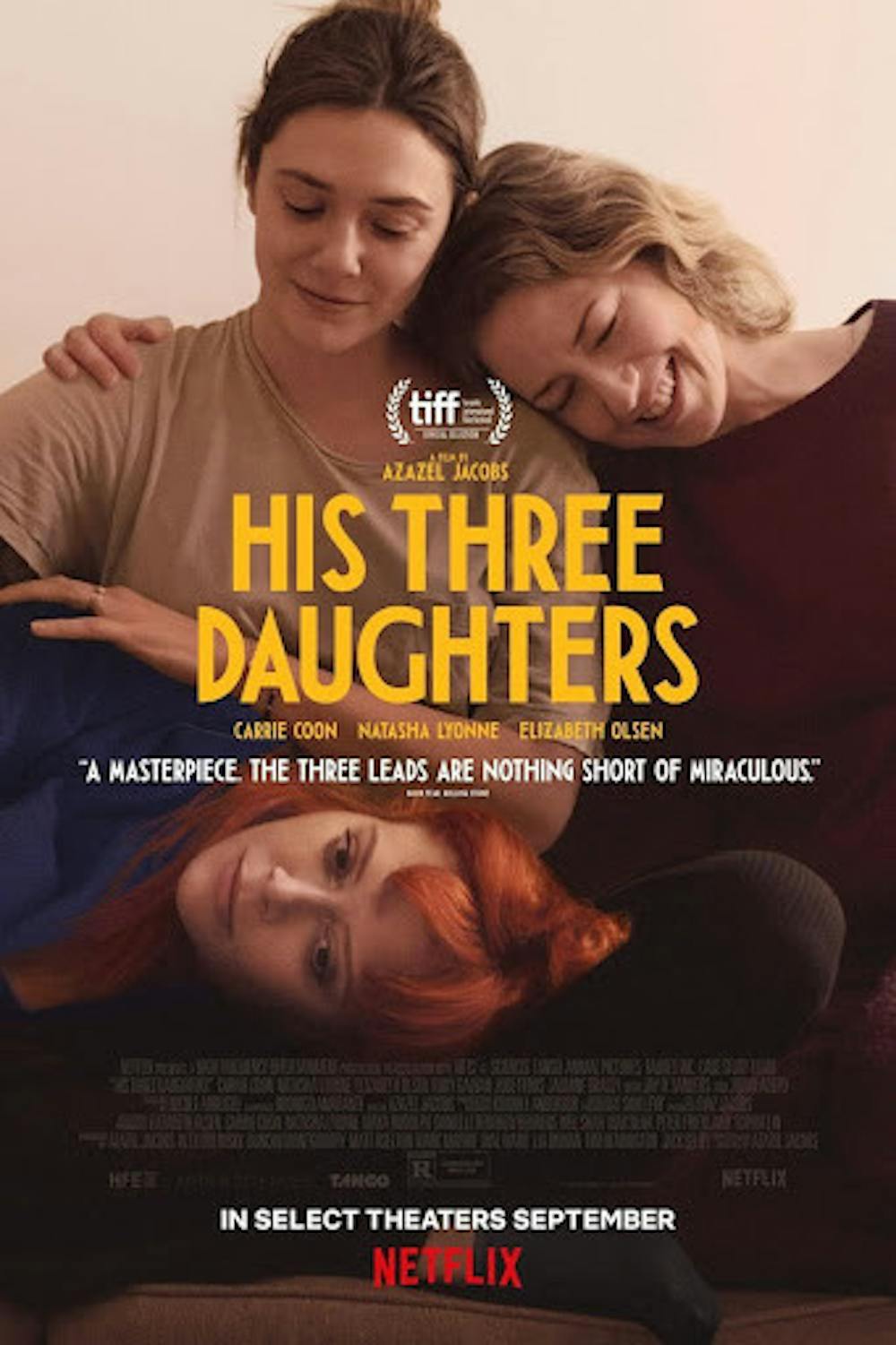By Ashley Ragone
Staff Writer
Their father is dying, and the forced proximity of his cramped Manhattan apartment does not make getting along any easier.
In Azazel Jacobs’ latest project “His Three Daughters,” released on Netflix on Sept. 20, he explores the lives of three estranged sisters: Katie, Christina and Rachel as they explore their fractured relationships.
The storyline begins with Vincent, played by Jay O. Sanders, who has found himself permanently living with Rachel, played by Natasha Lyonne, who has taken care of him towards the end of his battle with cancer. Lyonne masterfully embodies the free-spirited, marijuana-smoking and obsessive sports-betting nature of Rachel, the only step-sister.
Katie, played by Carrie Coon, is the most straight-laced of the group, insistent upon control and order. Her attention is directed to Rachel, whom she criticizes specifically for her caretaking abilities. She spends a considerable amount of screentime negotiating with doctors to get a Do Not Resuscitate form approved and finds only three bags of apples stocked in the fridge.
With a teenage daughter at home, Katie’s protective tendencies are projected onto Rachel and her perceived irresponsibility. This dynamic keeps Rachel literally distanced from Katie, as she keeps her emotionally at arm’s length and is forced to move outside to comfortably smoke.
Christina, played by Elizabeth Olsen, is the youngest of the sisters; she presents a facade of a perfect cookie-cutter family. However, underneath she is emotionally volatile, revealing cracks in her false presentation and inability to handle her father’s state. She attempts to maintain her composure, but an outburst after an argument reminds her of her personal insecurities and a potential glimpse into their home life when they were teenagers under the same roof.
The film’s emotional development is amplified as the sisters work towards a shared understanding and forgiveness. After Rachel’s boyfriend Benjy stands up for her in front of her sisters and explains just how painstakingly she has cared for their father, he prompts an apology from them, and their eventual unity over writing Vincent’s obituary illustrates the shared grief starting to bring them together.
Visually, Jacobs employs certain lighting techniques to additionally emphasize this unity. When we see the characters enter the room, they are washed in a harsh red light, a glow from his medical equipment that Jacobs described to RogerEbert.com as wanting “this sense of the abyss, of something unknown, that’s what’s going on in Vincent’s room…Then when you step out of his room, that’s when you go back to your normal life of making coffee, and figuring out groceries.”
Each sister’s body language during their interactions also shows a variety of emotions. Katie presents as severe and defensive with her arms crossed against her, Christina holding her chest anxiously and Rachel usually slouching or slumped over in some fashion. The rhythm of the characters communicating with one another presents the tension of the situation, a stark difference to how they end the movie all leaning on and trusting one another.
Toward the end of the movie, in a touching moment as the sisters reconcile and process their father’s last days, Christina sings “Five Little Ducks” as she comforts her sisters, a maternal habit that reinforces her new role as the family’s emotional anchor. Jacobs comments on this too, how he specifically placed her “in the middle of the couch while Katie and Rachel are leaning on her. There’s a sign of strength and grace that comes from Christina being connected to the family she had to find or the family that she’s made.”
“His Three Daughters” explores the power of grief and connection within an average family, navigating the claustrophobic environment of the shared apartment and its effect on adding to the tension originally seen between the three women. Through their shared experiences, the sisters are able to confront their lives together thus far, rediscovering their love for one another amidst the loss of their father.
Even as an only child, I can resonate with the themes of love and the power of grief within the family. Jacobs has reminded us of the profound impact love can have on us, and the importance of sticking together.







